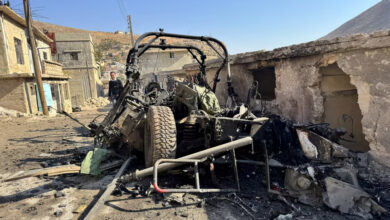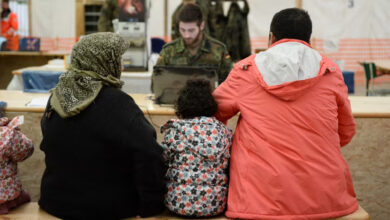
Heavy regime bombardment has damaged parts of the ancient citadel in Syria's world heritage site of Palmyra, an archeological expert and an activist said on Thursday.
At least 13 barrel bombs have exploded on the citadel and its surroundings since Monday, according to Cheikhmous Ali of the Association for the Protection of Syrian Archeology, which monitors damage to the country's heritage sites.
"We have not been able to assess the extent of the damage, but it is confirmed that parts of the citadel have been damaged by this bombing," Ali told AFP.
Syria's army is fighting to retake the city and its UNESCO-listed ruins from the Islamic State group, which overran the historic metropolis in May.
The regime, bolstered by Russian deliveries of new arms including warplanes, has intensified its air strikes on Palmyra over the past week, with dozens reported dead.
IS jihadists have raised their black flag over the 13th century Mamluk Fakhr al-Din al-Maani citadel, which lies northwest of the city and overlooks some of its spectacular Greco-Roman ruins.
Both the citadel and the ruins are on the UNESCO World Heritage list, and before the war around 150,000 tourists a year visited Palmyra.
Khaled al-Homsi, an activist from Palmyra, said regime bombardment had caused "widespread destruction of the citadel's walls," estimating that around 25 percent of the castle's walls had been damaged.
The Syrian Observatory for Human Rights, a British-based monitoring group, said the citadel had suffered "material damage" from "air strikes and heavy fire from regime airplanes on the citadel and its surroundings".
IS has sparked international outrage at its destruction of parts of Palmyra's heritage, including the celebrated Temples of Bel and Baal Shamin as well as several funerary towers.
The jihadists mined the ancient site in June before destroying the Lion Statue of Athena outside the Palmyra museum, which had mostly been cleared by antiquities staff before IS arrived.




